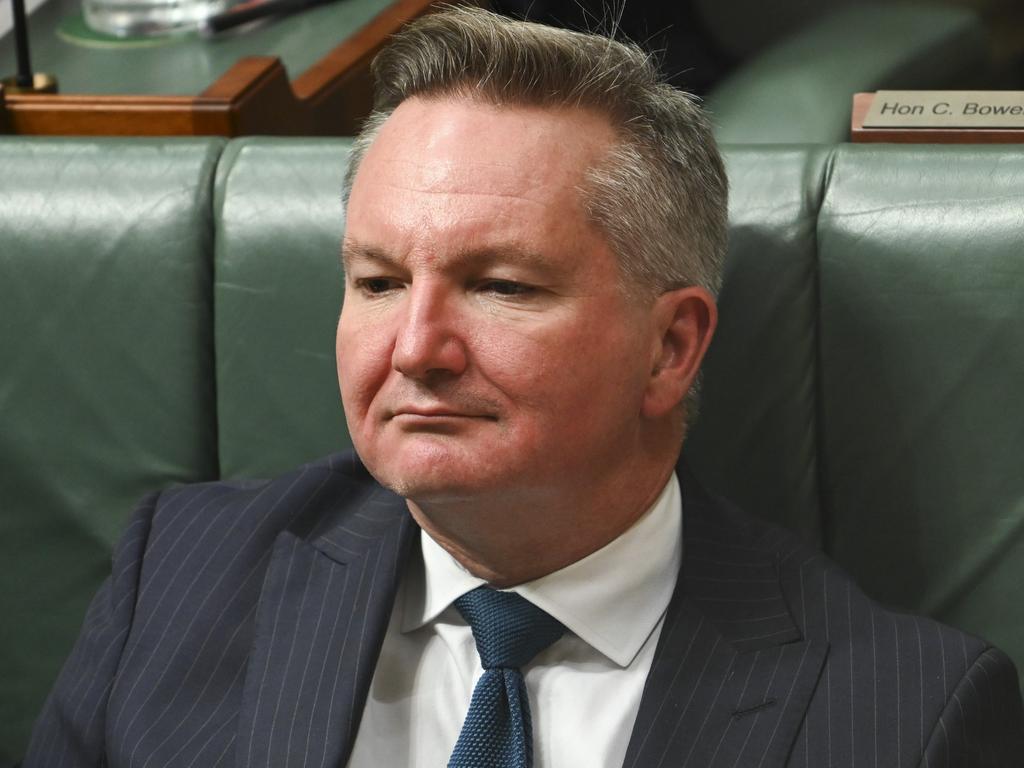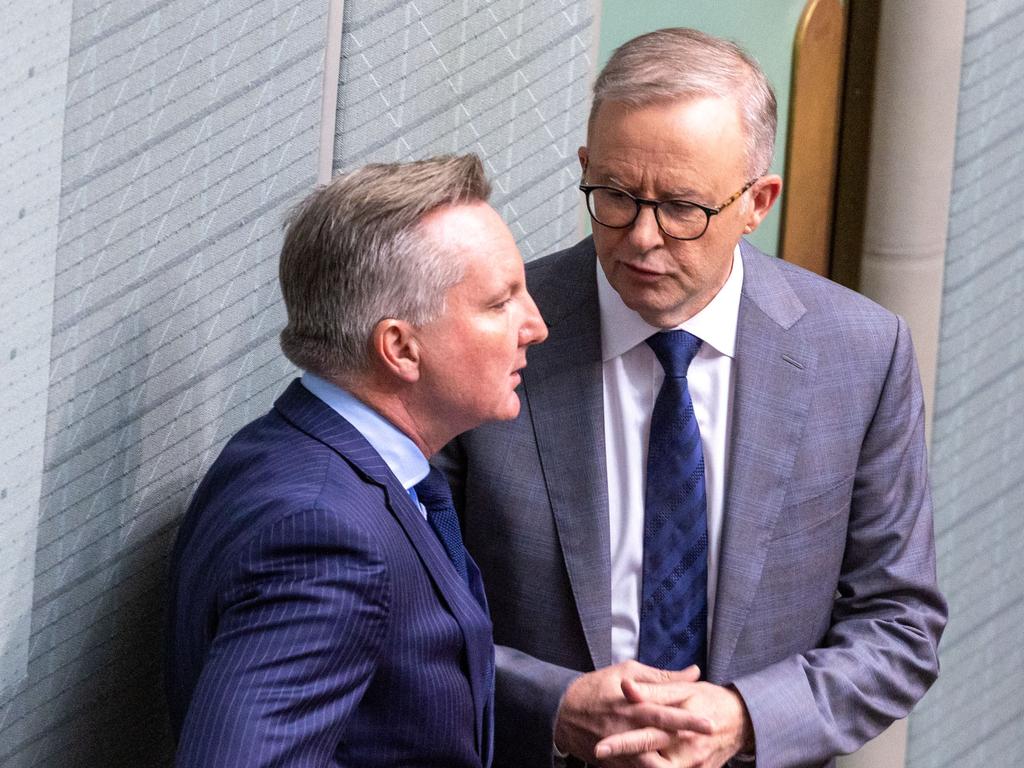Renewables’ welfare dependence leaves us in China’s shadow


The Australian Renewable Energy Agency prefers to avoid the loaded term “subsidy”. It speaks instead of “accelerating the pace of pre-commercial innovation” by supporting “improvements in the competitiveness of renewable energy.” ARENA has been handing out welfare checks to pre-competitive businesses at the rate of roughly one a week since it was established by the Gillard government in 2012.
Last week, Energy Minister Chris Bowen and Anthony Albanese travelled to the Hunter Valley to announce ARENA’s 642nd grant. It was a whopper: a cool $1bn to help a start-up company backed by Mike Cannon-Brookes and Malcolm Turnbull to build a solar panel manufacturing plant.
The grant is six times larger than ARENA’s previous largest handout, the $166m gifted to AGL (underlying profit forecast FY 2024: $680m) to build a couple of solar electricity plants in outback NSW. The Prime Minister framed the announcement as a heartwarming story of Australian technology that is coming home.
While Australia had led the world in photovoltaic innovation, it had not been good at commercialising those opportunities, he said. His government was committed to making more things here, skilling up young Australians for the jobs of the future.
Sundrive, the subsidy’s recipient, is a darling of the climate-tech sector. It is developing technology to replace silver in solar cells with copper to make them cheaper and more efficient. Yet, like most of the new technologies on the climate-tech drawing board, it has yet to be proven at scale. Bowen’s boast that Sundrive’s operation in the Hunter would be “up and running well and truly this calendar year” seemed somewhat premature.
If Sundrive’s intellectual property is such a sure-fire winner, why wouldn’t Cannon-Brookes, Australia’s fourth-richest person, risk a lazy billion of his own? The renewable energy sector operates in a different universe, however; one full of strange paradoxes that are yet to be explained. We are told (by the CSIRO, no less) that renewable energy generates the cheapest form of electricity. Yet it remains hopelessly pre-competitive, requiring subsidies and favourable regulatory structures from cradle to grave.

We are told that low-carbon technology is the way of the future and fossil fuel-based businesses are distressed assets. Yet this wisdom is ignored by private investors who prefer to dip their hands into the government’s pockets to fund renewable energy rather than their own.
Renewable energy is welfare-dependent as well as weather-dependent. It suffers from a condition a psychologist might recognise as Dependent Personality Disorder: a pervasive and excessive need to be taken care of, leading to submissive and clinging behaviour, fear of separation and difficulty making decisions without reassurance from others.
It has become disconnected from the real world, where government subsidies alone do not easily overcome competitive disadvantages. China’s stranglehold of the global solar supply chain will be hard to break. It is hard to imagine how a manufacturing operation in the Hunter could match China’s entrenched competitive advantages: cheap labour, cheap energy and a ruthless, authoritarian government. Xinjiang province didn’t become the global hub for polysilicon manufacturing by chance.
The province produces 400 million tonnes of raw coal a year, more than twice the output of the Hunter Valley, and has 203 coal-fired power plants compared to four in NSW. Xinjiang has an abundant supply of forced labour. An estimated half a million Uighurs are held in detention camps. The terms and conditions under which they are employed fall somewhat short of those in the Hunter.
China’s view of intellectual property is less rigid than ours. If Sundrive’s technology is even half as good as its spruikers claim, it would be a miracle if the Chinese didn’t nick it and have it up and running by tea time.
The book of Australian hi-tech manufacturing miracles is a short and disappointing tale. Five years ago, a company called Amaero was considered the next big thing in 3D printing using additive manufacturing technology developed at Monash University.

Amaero’s 2019 listing on the Australian Stock Exchange was heavily oversubscribed. The company announced it would invest $8m in a titanium alloy powder factory in Melbourne. It pushed ahead with a 3D manufacturing plant in Adelaide to service the defence and aerospace sectors.
In October, Amaero told the stockmarket it was ceasing operations in Australia and moving its headquarters to Tennessee. It cancelled its leases in Victoria and South Australia, paying out $730,000 in compensation.
It gave two reasons: better access to credit and a long-term electricity rate subsidy from the Tennessee Valley Authority, which had offered the company a rate 85 per cent less than the prevailing rates in Victoria.
Cautionary tales such as these illustrate that the Albanese government is hopelessly out of its depth in energy and industry policy. It is entranced by the dream that Australia can become a global renewable energy superpower. Yet there is only one dominant player in the renewable sector, and its name is China.
It is where almost all our lithium is sent for processing, and from where it returns in giant batteries. Last year, 86.9 per cent of EVs sold in Australia were manufactured in China. China produces seven of the 10 best-selling EVs, including the Tesla Model Y and Model 3, which are built under licence in Shanghai, BYD Atto 3, MG ZS EV, Volvo XC40, Polestar 2, and Volvo C40.
The recklessness of the policies pushing Australia towards energy dependence on China is matched by the blind faith that assumes Australia can swap out its natural advantage in fossil fuel for one in wind and solar.
It is a fundamental misunderstanding of the shape of energy transition. In the old energy paradigm, fuel was the largest element in the marginal cost of production, giving coal, gas and oil-rich Australia a natural edge. In the new paradigm, the most important driver is the cost of manufacturing, a game in which countries other than Australia excel.
Sooner rather than later, we will discover that reality isn’t optional, as economist Thomas Sowell is fond of pointing out. The real problem of the anointed is that the universe was not built according to their specifications and shows no sign of bowing to their superior wisdom.
Nick Cater is a senior fellow at the Menzies Research Centre.







ARENA is the renewable energy industry’s version of Centrelink. It lends a helping hand to businesses struggling to raise money from investors.